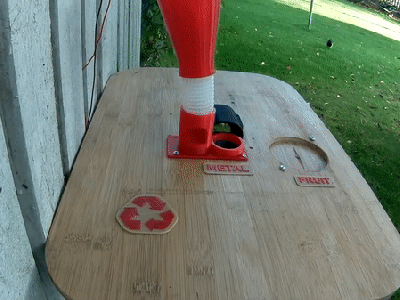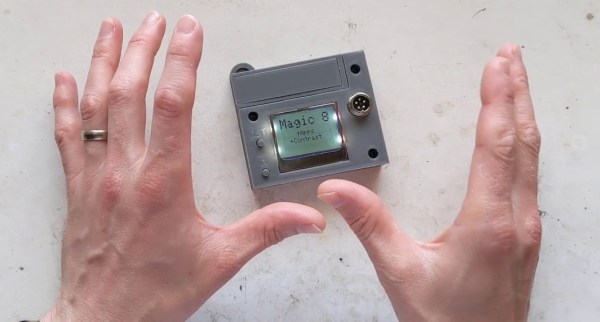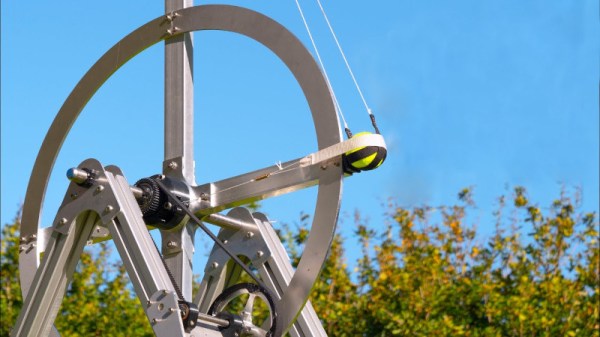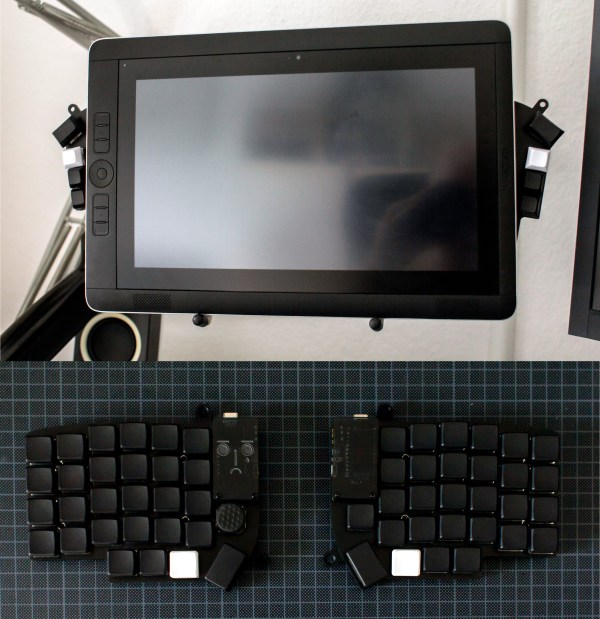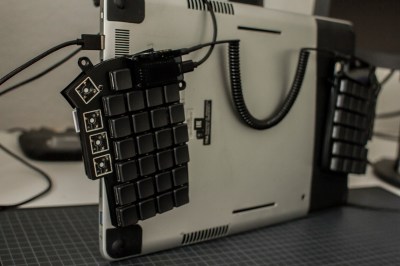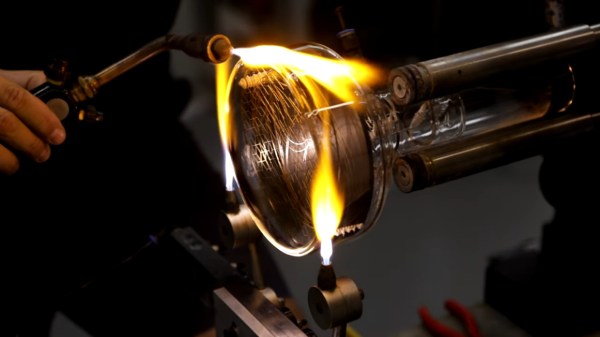If you wear headphones around the house with any regularity, you’re probably missing out on a lot of audio cues like knocks at the door, people calling your name, or maybe even the smoke alarm. What if you had a visual indicator of sound that was smart enough to point it out for you?
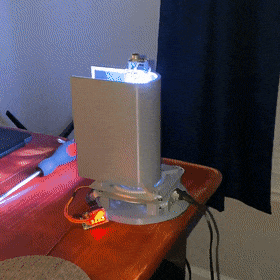 That is the point of [Jake Ammons’] attention-getting lighthouse, designed and built in two weeks’ time for Architectural Robotics class. It detects ambient noise and responds to it by focusing light in the direction of the sound and changing the color of the light to a significant shade to indicate different events. Up inside the lighthouse is a Teensy 4.0 to read in the sound and spin a motor in response.
That is the point of [Jake Ammons’] attention-getting lighthouse, designed and built in two weeks’ time for Architectural Robotics class. It detects ambient noise and responds to it by focusing light in the direction of the sound and changing the color of the light to a significant shade to indicate different events. Up inside the lighthouse is a Teensy 4.0 to read in the sound and spin a motor in response.
[Jake]’s original directive was to make something sound-reactive, and then to turn it into an assistive device. In the future [Jake] would like to add more microphones to do sound localization. We love how sleek and professional this looks — just goes to show you what the right t-shirt stretched over 3D prints can do. Check out the demo after the break.
Seaside lighthouses once used gas lights giant Fresnel lenses, but now they use LEDs. A company in Florida is using CNC machines to crank out acrylic Fresnels.
Continue reading “This Tabletop Lighthouse Will Get Your Attention”



